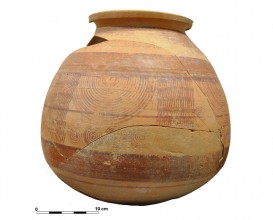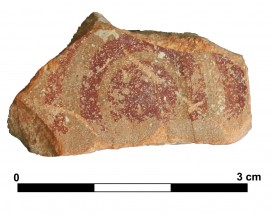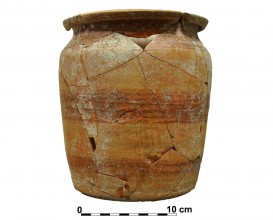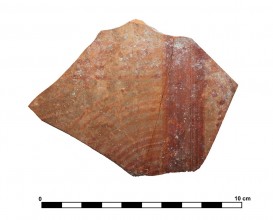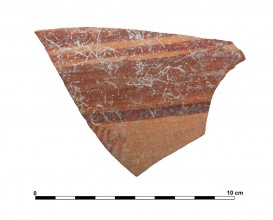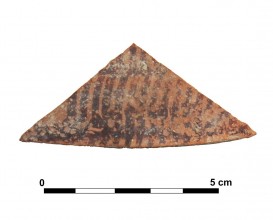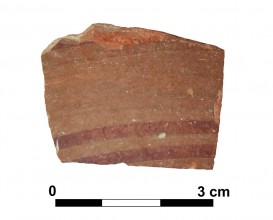Ceramic vessel 1A-13. Cerro de las Alhabacas
The grey background is the result of the transformation of hematite in magnetite (Fe3O4) in a reducing atmosphere. EDXFR analysis confirms the presence of Fe (4.68% wt) and the lack of Mn (0.02% wt) in the decoration.
Dimensions
: 5 Centimeters
: 3 Centimeters
Materials
pottery
Temporal
: Iberian, Iberians
: Late 3rd ct. BC
Spatial
: Cerro de las Albahacas
: Santo Tomé, Jaén, Spain
: WGS84
Copyrights
Creative Commons - Attribution, Non-Commercial, No Derivatives (BY-NC-ND)
References
Bellón, J. P.; Rueda, C.; Lechuga, M. A. y Molinos, M. (2016): “Archaeological methodology applied to the analysis of battlefields and military camps of the Second Punic War: Baecula”. Quaternary International · DOI: 10.1016/j.quaint.2016.01.021
Bellón, J. P.; Ruiz, A. Molinos, M; Rueda, C. y Gómez F. (eds.) (2015): La Segunda Guerra Púnica en la Península Ibérica. Baecula: arqueología de una batalla. Textos CAAI 7. Universidad de Jaen. Jaén.
Digital Resources
-

Creative Commons - Attribution, Non-Commercial, No Derivatives (BY-NC-ND)
Arquiberlab
http://creativecommons.org/licenses/by-nc-nd/3.0/ -

Creative Commons - Attribution, Non-Commercial, No Derivatives (BY-NC-ND)
Arquiberlab
http://creativecommons.org/licenses/by-nc-nd/3.0/ -
Pdf file
Creative Commons - Attribution, Non-Commercial, No Derivatives (BY-NC-ND)
Arquiberlab
http://creativecommons.org/licenses/by-nc-nd/3.0/ -

Creative Commons - Attribution, Non-Commercial, No Derivatives (BY-NC-ND)
Arquiberlab
http://creativecommons.org/licenses/by-nc-nd/3.0/
Activities
Archaeometric analysis Physical-chemical analysis Ceramic. Analysis of decoration.
| |
X-Ray Fluorescence Elemental analysis of the red decoration Non destructive. Surface cleaning. Sample pretreatment is not required. Direct measurement. Energy dispersive X- ray fluorescence (EDXRF) EDAX (model Eagle III) fluorescence spectrometer (CITI, University of Seville). This spectrometer is equipped with a microfocus X-ray tube with an Rh anode, a polycapillary lens for X-ray focussing, and an 80 mm2 energy dispersive Si-(Li) detector. The sample chamber incorporates an XYZ motorized stage for sample positioning. A high resolution microscope is used to position the sample on the desired distance from the polycapillary. To increase the sensitivity of the low Z elements, the sample chamber can be brought under vacuum. For the analysis of the samples, a spot size of 300 μm was chosen at an operating X-ray tube voltage of 40 kV. The tube current was adapted for each sample in order to optimise the detection of X-rays |



